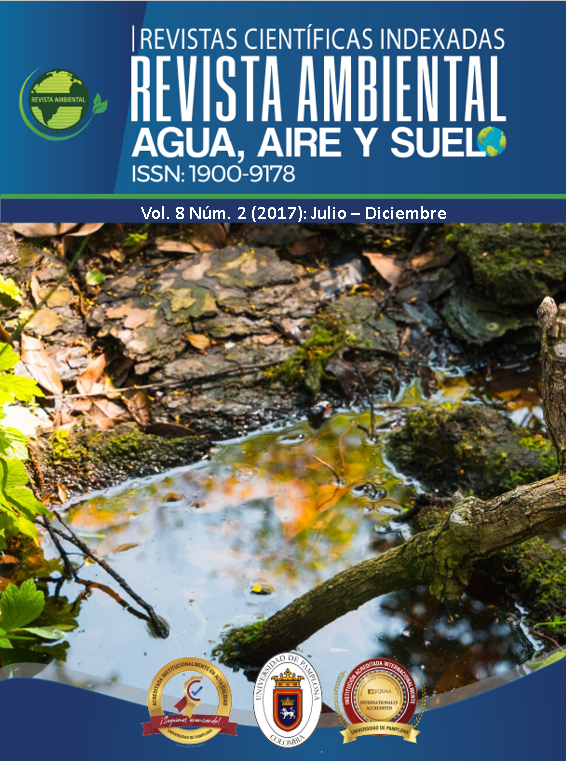Analysis of Vulnerability to Mass Removal Phenomena in the Tanauca Basin: Case Study
DOI:
https://doi.org/10.24054/aaas.v8i2.2062Keywords:
Compactación, endurecimiento, acidificación, susceptibilidad, granulometría, cohesiónAbstract
The phenomenon of mass movement constitutes a significant threat since, when combined with the vulnerability of exposed populations, it determines the risk of imminent disasters. This article aims to present a detailed analysis of vulnerability to these phenomena in the Tanauca watershed. To this end, an analysis of secondary information was carried out by collecting data based on the watershed planning and management plan, the basic territorial planning plan of the municipality of Pamplona, and the hydrometeorological data from the ISER station in Pamplona, together with studies conducted for the physical characterization of the soils present in this area. The predominance of sandy-clayey soils causes low permeability and therefore high retention of water and nutrients; nevertheless, they have low porosity, being soils that lack adequate aeration, show great resistance to root penetration, and hinder plant emergence. The inadequate agricultural and livestock management to which the soil is exposed has caused it to deteriorate significantly, producing loss of vegetative cover and, as a result of precipitation, sheet erosion, thus leaving the area exposed to collapses or landslides.
Downloads
References
Ayala-Carcedo, F. J., & Olcina-Cantos, J. (2002). Propuesta metodológica para establecer áreas de riesgo por remoción en masa. Cuadernos de Geografía: Revista Colombiana de Geografía, 22(2), 145–169. https://doi.org/10.15446/rcdg.v22n2.37764
Chardon, A.-C. (2002). Un enfoque geográfico de la vulnerabilidad en zonas expuestas a amenazas naturales: El ejemplo andino de Manizales, Colombia. HDRNet. http://hdrnet.org/372/1/CHARDON_04.PDF
IDEAM. (2014). Instituto de Hidrología, Meteorología y Estudios Ambientales. http://www.ideam.gov.co/
Maskrey, A. (Ed.). (1998). Navegando entre brumas: La aplicación de los sistemas de información geográfica al análisis de riesgo en América Latina. IT Perú y LA RED, Tercer Mundo Editores.
Ministerio de Medio Ambiente. (2016). Guía para la elaboración de estudios del medio físico. España: Ministerio de Medio Ambiente.
Plan Básico de Ordenamiento Territorial del Municipio de Pamplona. (s.f.).
Plan de Ordenamiento y Manejo de Cuencas Hidrográficas (POMCA) del río Pamplonita. (2012). Tomo III.
Rivera, M. E., Gutiérrez, A., Cristancho, G. Y. (2013). Diagnóstico y manejo ambiental de la microcuenca Q. El Escorial, municipio Pamplona. Revista Ambiental Agua, Aire y Suelo, 4(1), 45–52. ISSN 1900-9178.
Rodríguez, S. J. G., Quintana, C. D., Rivera, A. H. U., & Mosquera, T. J. (2013). Zonificación del peligro de remoción en masa en las zonas urbanas según método de análisis Mora y Vahrson: Estudio de caso. Revista Ambiental Agua, Aire y Suelo, 4(1), 13–22. ISSN 1900-9178.
Rojas-Vilches, O., & Martínez-Reyes, C. (2011). Riesgos naturales: Evolución y modelos conceptuales. Revista Universitaria de Geografía, 20, 83–116. Universidad Nacional del Sur.
Downloads
Published
Issue
Section
License
Copyright (c) 2022 REVISTA AMBIENTAL AGUA, AIRE Y SUELO

This work is licensed under a Creative Commons Attribution-NonCommercial 4.0 International License.










